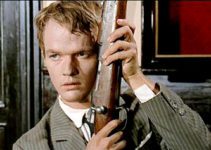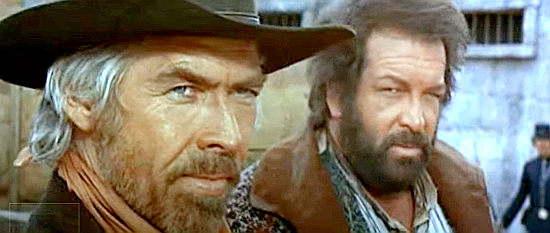 George Eastman is Lucas, a gambler with a mean reputation for cleaning out his opponents at poker.
George Eastman is Lucas, a gambler with a mean reputation for cleaning out his opponents at poker.
So it’s quite a shock when he has to borrow $4,000 just to stay in the game with a stranger named George Bronson (George Hilton) and still winds up losing everything.
All is not lost, Bronson assures Lucas. He’ll cover the $4,000 debt. He’ll even offer Lucas a chance to make $5,000 more if he agrees to deliver a wagon to the town of Chamaco.
It’s a short trip for such a handsome payment, Lucas notes.
Well, that’s because the last driver was killed. And there’s something mysterious about this wagon. It’s filled with paper. What would the blacksmith in Chamaco want with a wagon load of paper?
Lola, the pretty waitress at the saloon in Chamaco, doesn’t know. But she does know her father, an artist, has been taken captive by Masters, the man who controls the town through his wealth.
And that means she’s obliged to do his bidding to keep her father safe. Right now, that means luring Lucas into a trap so Masters can meet the man who escaped an ambush on his way to town.

George Eastman as Lucas, defiant even after being beaten by Masters’ men in Poker with Pistols (1967)
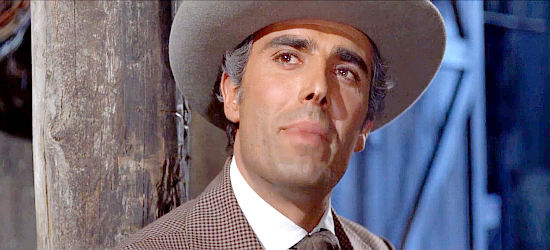
George HIlton as George Bronson, the man who ropes Lucas into doing his bidding in Poker with Pistols (1967)
OK, there’s a wagon load of paper and a captured artist. I bet most fans of Spaghetti Westerns can add those two clues together and figure out what’s up, certainly before George Eastman’s character does.
Given the title, it’s not surprising that the film opens with a prolonged poker match between our heroes, setting up the action.
More odd is a roulette game midway through the film. Apparently, that’s how Lucas collects his $5,000 payment. Of course, he provokes Masters’ ire when he won’t stop playing after winning his $5,000.
Poor Lucas winds up paying a heavy price for that. At one point, he’s tied up crucifixion style with a pitchfork placed under his chin. That way, if his head droops, he’s going to wind up with a pretty sore neck at the very least.
Another oddity, Bronson takes Lola along when he and Lucas infiltrate Masters’ ranch in an attempt to free her dad. Talk about intentionally putting a damsel in distress.
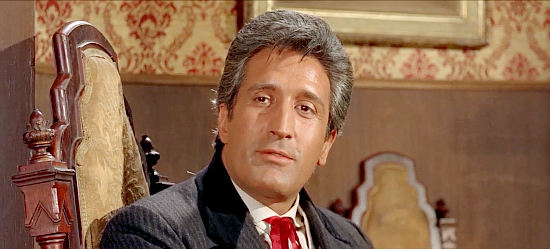
Mimmo Palmara (Dick Palmer) as Masters, the rich man who rules the town of Chamaco in Poker with Pistols (1967)
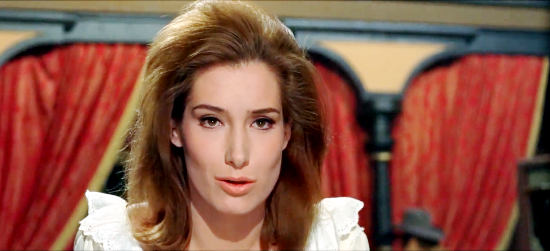
Annabelle Incontrera as Lola, a saloon girl whose artist father has been kidnapped by Masters in Poker with Pistols (1967)
Directed by:
Giuseppe Vari
as Joseph Warren
Cast:
George Hilton … Terrail / George Bronson
George Eastman … Lucas
Annabella Incontrera … Lola
Mimmo Palmara … Masters
as Dick Palmer
Aymo Albertelli … Lola’s father
Valentino Macchi … Pat, Master’s henchman
Jose Torres … Lazar
Also with: Claudio Ruffini, Giuseppe Castellano, Gino Marturano, Ennio Pagliani, Luciano Doria, Paolo Filgia, Renzo Pevarello, Angelo Casadei, Alberigo Donadeo, Nicola Di Gioia
Runtime: 86 min.
aka:
Un poker di pistole
Music: Lallo Gori
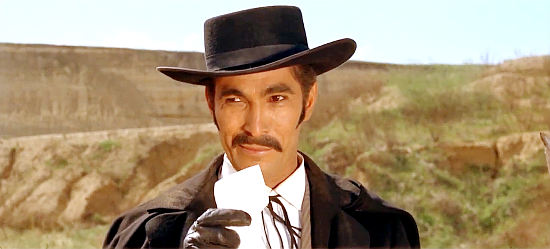
Jose Torres as Lazar, a Mexican who deals his way into a mystery with a $4,000 loan in Poker with Pistols (1967)
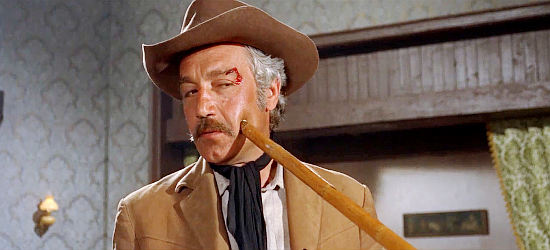
Valentino Macchi as Pat, Master’s henchman, showing the effects of a run-in with Lucas in Poker with Pistols (1967)
Memorable lines:
George Bronson, when a waitress rejects Lucas’s generous tip: “Proud little thing, isn’t she?”
Lucas: “Yeah, and proud is the way I like ’em.”
Masters: “You weren’t very smart, coming out here.”
Lucas: “I wasn’t trying to be smart, Masters.”
Lola’s father: “I once made a thousand peso note. It was perfect work. Violet and green with the face of Maximilian on it. And he was smiling …”
Lazar: “Maximilian never smiled in his life, you idiot. Every school child knows that.”
The artist: “I know. But I wanted to see if anyone would notice it was a forgery.”
Masters: “Have you mentioned my name to anyone in connection to the wagon or the artist? Are you going to tell me?”
Lucas: “Well, Masters, it don’t matter if I tell you or not. You’re going to kill me in any case. But since you’re so eager to know, I think I’ll let you with your curiosity. And I hope you choke to death on it.”
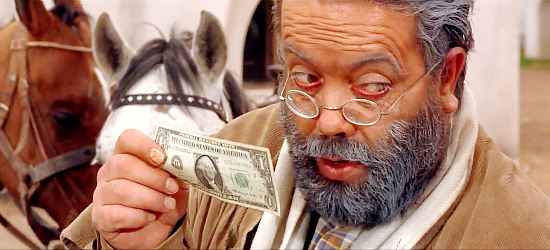
Aymo Albertelli as Lola’s father, an artist considering his next endeaver in Poker with Pistols (1967)
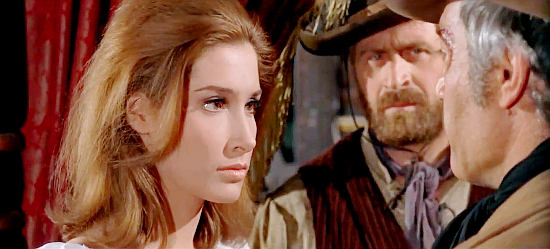
Annabelle Incontrera as Lola, getting a reminder in the importance of following Masters’ orders in Poker with Pistols (1967)
Trivia:
George Eastman and George Hilton each appeared in at least a dozen Euro Westerns. This is the only one they made together.
One of seven Westerns directed by Vari, who also helmed “Degueyo” (1966), “The Last Killer” (1967), “Death Rides Alone” (1967), “Hole in the Forehead” (1968), “The Last Traitor” (1971) and “Shoot the Living, Pray for the Dead” (1971).
Annabella Incontrera also had roles in “A Bullet for Sandoval” (1969), “Challenge of the MacKennas” (1970), and “The Return of Sabata” (1971), where she plays Lee Van Cleef’s sexy squeeze. She’d appear in about 40 films over the course of her career, including a host of Italian thrillers like “The Crimes of the Black Cat” and “The Case of the Bloody Iris.”
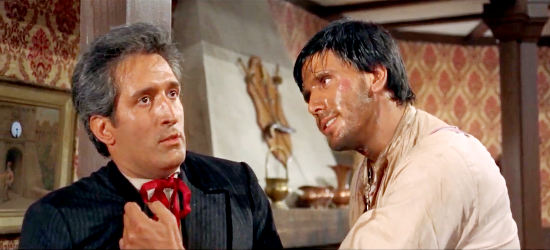
George Eastman as Lucas, trying to find out what Masters (Mimmo Palmara) is doing with a wagon load of paper and a kidnapped artist in Poker with Pistols (1967)
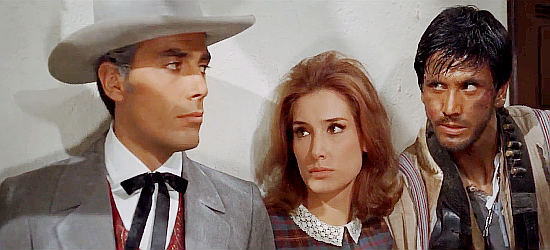
George Hilton as George Bronson, Annabella Incontrera as Lola and George Eastman as Lucas trying to find a captive in Masters’ home in Poker with Pistols (1967)


